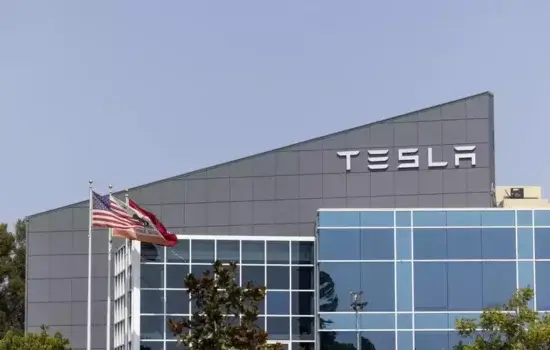Tesla, Inc., founded by Elon Musk in 2003, is a pioneer in the electric vehicle (EV) industry, known for its innovation, sustainable energy solutions, and disruptive approach to automotive design. As the world increasingly embraces eco-friendly technology, Tesla has positioned itself at the forefront of this transformation. In 2024, the company continues to influence the global automotive market, not only through its vehicles but also by its ventures into renewable energy, autonomous driving, and more.
Tesla Current Overview

Tesla’s market presence in 2024 is robust, with the company consistently leading in EV sales globally. Its flagship models—Model S, Model 3, Model X, and Model Y—dominate the EV market, particularly in the United States and Europe. The company’s expansion into China has also been a strategic success, bolstering its international footprint. Tesla’s Gigafactories, strategically located across the globe, play a critical role in scaling production and meeting the growing demand for electric vehicles and energy storage solutions. Despite challenges such as fluctuating supply chains and increasing competition, Tesla remains a dominant force in the EV industry, driven by its commitment to innovation and sustainability.
Strengths
1. Strong Brand Identity: Tesla is synonymous with electric vehicles and sustainable energy. Its brand is globally recognized, and its loyal customer base trusts Tesla for cutting-edge technology and innovation in eco-friendly vehicles. Tesla’s commitment to environmental sustainability and its charismatic CEO, Elon Musk, have further solidified its brand image.
2. Technological Innovation: Tesla leads the industry in automotive technology, particularly in autonomous driving, battery technology, and software integration. The Autopilot feature, constantly being improved, is a key differentiator that sets Tesla apart from competitors. Additionally, Tesla’s over-the-air software updates keep its vehicles at the forefront of innovation long after purchase.
3. Global Expansion: Tesla has successfully expanded its production and sales globally, with significant market penetration in Europe and China. Its Gigafactories in Shanghai, Berlin, and Texas are pivotal in scaling production to meet global demand, reducing costs, and mitigating supply chain risks.
4. Vertical Integration: Tesla’s control over its supply chain, from battery production to software development, allows it to maintain high-quality standards, reduce costs, and innovate more rapidly than competitors who rely on third-party suppliers.
Weaknesses
1. High Production Costs: Despite economies of scale, Tesla’s vehicles are still positioned as premium products, limiting their accessibility to a broader audience. The high cost of production, especially for batteries, remains a significant challenge, impacting profit margins.
2. Overdependence on Elon Musk: Tesla’s brand and leadership are closely tied to Elon Musk’s persona. While this has been a strength, it also presents a risk. Musk’s involvement in multiple ventures and his sometimes controversial public statements can impact Tesla’s brand and stock performance.
3. Quality Control Issues: Tesla has faced criticism for quality control, particularly in the early production runs of new models. Reports of mechanical issues, paint defects, and software glitches have affected customer satisfaction and could harm Tesla’s reputation if not addressed.
4. Supply Chain Vulnerabilities: Tesla’s supply chain, while robust, is not immune to global disruptions. The company has faced challenges due to shortages in semiconductors and other critical components, leading to delays in production and deliveries.
Opportunities
1. Growing EV Market: The global shift towards electric vehicles presents a massive growth opportunity for Tesla. As governments implement stricter emissions regulations and offer incentives for EV adoption, Tesla is well-positioned to capture a significant share of the expanding market.
2. Autonomous Driving: Tesla’s advancements in autonomous driving technology offer significant growth potential. As regulatory environments evolve to accommodate self-driving cars, Tesla could lead the market in this next wave of automotive innovation.
3. Energy Solutions: Beyond vehicles, Tesla’s energy products, including solar panels and Powerwall battery storage systems, have the potential to revolutionize the renewable energy market. Expanding this segment could diversify Tesla’s revenue streams and reduce dependence on vehicle sales.
4. Battery Production: Tesla’s plans to produce its own batteries could significantly reduce costs and improve production efficiency. This vertical integration will not only support vehicle production but also boost Tesla’s energy storage solutions business.
Threats
1. Intensifying Competition: The automotive industry is witnessing a surge in competition as traditional automakers and new entrants invest heavily in electric vehicles. Companies like Ford, General Motors, and new Chinese startups are rapidly closing the gap with Tesla, offering similar products at competitive prices.
2. Regulatory Challenges: As Tesla operates in multiple markets, it must navigate complex regulatory environments. Changes in government policies, especially regarding autonomous driving and emissions standards, could impact Tesla’s operations and growth.
3. Economic Uncertainty: Global economic conditions, including inflation and potential recessions, could reduce consumer spending on high-ticket items like electric vehicles. Additionally, fluctuations in currency exchange rates could affect Tesla’s profitability in international markets.
4. Litigation and Controversies: Tesla has faced numerous lawsuits and controversies, including those related to vehicle safety, worker conditions, and Elon Musk’s public statements. These issues could damage Tesla’s reputation and lead to financial penalties.
Conclusion
Tesla’s position as a leader in the electric vehicle and renewable energy sectors is undisputed. Its strengths in brand recognition, technological innovation, and global expansion provide a solid foundation for continued growth. However, the company faces significant challenges, including high production costs, quality control issues, and intensifying competition. To maintain its leadership, Tesla must continue to innovate while addressing these weaknesses and navigating a complex and evolving global market. In 2024, Tesla’s ability to capitalize on opportunities in autonomous driving and energy solutions will be crucial in determining its long-term success.